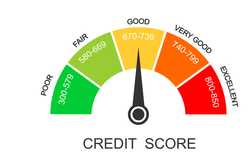How to Accept Credit Card Payments as a Small Business

Our evaluations and opinions are not influenced by our advertising relationships, but we may earn a commission from our partners’ links. This content is created by TIME Stamped, under TIME’s direction and produced in accordance with TIME’s editorial guidelines and overseen by TIME’s editorial staff. Learn more about it.
The adage that cash is king isn’t as true anymore. According to recent research from Capital One, over 80% of shoppers prefer to use cards over cash. In other words, if you're a small business owner, you could miss out on sales by not accepting credit cards.
Yet credit card companies and processors make money in part by charging fees to merchants, so it’s important to compare your payment gateway options. Whether you do business online, in person, or both, here's how to accept credit cards as a small business.
Note: There's little difference between credit and debit card processing. For simplicity's sake, we use "credit cards" to refer to credit and debit cards.
Small businesses can accept credit card payments in person, online, or by phone. Here's a quick overview of each method.
In-person payments are common for brick-and-mortar retailers, mobile businesses like food trucks, and on-site service providers such as landscapers and plumbers. You'll need a point-of-sale (POS) system and a card reader to accept in-person credit card payments.
A POS system is the hardware and software you use to accept payments and do various other tasks, like tracking sales and updating inventory. A card reader is a component of the POS. It extracts information from your customer's credit card and sends it to the payment processor.
The type of card reader you'll need depends on how and where you do business:
The easiest way to accept online credit card payments is through a payment service provider (PSP) like PayPal, Shopify, Square, or Stripe. You'll have to connect the PSP to your e-commerce website, which is generally straightforward with modern website builders. Once set up, customers can securely enter their credit card information on your check-out page to make purchases.
If your business accepts phone orders, you can manually enter the card information into your POS terminal (a "card-not-present" transaction) or through your PSP's virtual terminal site, which lets you process transactions from any device with an internet connection. Because phone transactions pose the greatest risk for fraud, they generally incur the highest processing fees.
Merchant accounts and payment service providers (PSPs) enable your small business to accept credit and debit cards, but they work differently. A merchant account is the traditional way companies accept credit cards. It's a specialized bank account for processing and settling electronic payments, including credit and debit cards. Once your account is approved, you receive (or buy) the necessary equipment to process payments, paying any agreed-upon fees.
PSPs like PayPal, Square, and Stripe can be the quickest and most straightforward way to accept payments—and often come with fewer fees. Your business becomes a "sub-merchant," licensed to process transactions through the PSP merchant account. However, PSPs have some restrictions, including limiting how much a consumer can spend in a specific timeframe, so compare several before deciding which one to go with.
Four parties comprise every credit card transaction:
Here are the basic steps in the credit card transaction process:
Once the issuing bank approves a transaction, the payment processor debits the amount from the customer's account and credits your merchant account. The funds are transferred to your main business bank account within a few business days.
As mentioned, over 80% of consumers prefer paying with plastic over cash, but what are the benefits for the business owner?
There are a few drawbacks to consider when deciding whether accepting credit cards is the right choice for your business:
Businesses have to pay several fees when accepting credit cards:
Once a customer makes a credit card purchase, it takes two to four business days for the payment to process and reach the merchant’s bank account.
Choosing the right credit card processor can take time and effort. It's helpful to compare at least three options, paying attention to fees, supported payment methods, fraud detection and prevention tools, and dispute management. You'll also want to consider each provider's customer service, including feedback on the Better Business Bureau (BBB) and review sites like Trustpilot. That way, you can find an option that best fits your needs so you can focus on running and growing your business.
In today's increasingly cashless society, numerous online and mobile applications—including Cash App, PayPal, and Venmo—can be used to pay a business with a credit card. If you're sending money, remember that using a linked bank account (instead of a credit card) is usually cheaper. Payment apps generally charge about 3% of the transaction amount when you use a card to send money.
Small businesses can accept card payments online, over the phone, and in person using a countertop or mobile card reader. How a small business takes payments depends on where and how it operates. For example, on-the-go businesses like mobile dog groomers may use a mobile card reader, while e-commerce shops accept payments online.
The cheapest option depends on sales volume. If your company brings in less than $5,000 monthly, a payment processor with a flat-rate pricing model may be the most affordable solution. Businesses with higher sales volumes might find subscription-based plans or volume-based discounts more beneficial. It's a good idea to shop around and compare at least three options to find what works best for you.
If your business accepts credit card payments, you'll generally need a business bank account to receive funds once the payments have been processed. Still, you can accept credit card payments as an individual using services like PayPal, Stripe, or Square.
The information presented here is created by TIME Stamped and overseen by TIME editorial staff. To learn more, see our About Us page.



